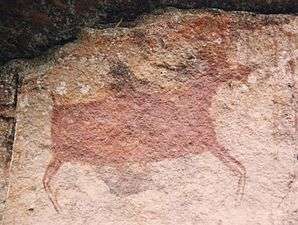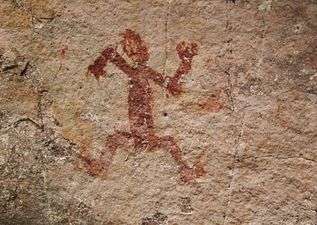Serranía de Chiribiquete
| Serranía de Chiribiquete | |
|---|---|
 Aerial view of Chiribiquete | |
| Highest point | |
| Peak | Cerro Chiribiquete |
| Elevation | 800 m (2,600 ft) |
| Coordinates | 1°19′39″N 72°45′41″W / 1.32750°N 72.76139°WCoordinates: 1°19′39″N 72°45′41″W / 1.32750°N 72.76139°W |
| Dimensions | |
| Length | 125 km (78 mi) |
| Width | 30 km (19 mi) |
| Geography | |
 Serranía de Chiribiquete Location in Colombia
 | |
| Country | Colombia |
| State/Province | Caquetá, Guaviare |
The Serranía de Chiribiquete or Chiribiquete Mountains are a group of isolated table mountains in the Amazon Region of Colombia. The mountains are part of the western edge of the Guiana Shield.[1] The area is protected as a national park. This area is habitat for the Chiribiquete emerald (Chlorostilbon olivaresi), an endemic hummingbird. The waterfall Caño Paujil originates from the Serranía de Chiribiquete.[2]
Protected area
The Chiribiquete National Park is the largest national park of Colombia with 27,000 square kilometres (10,000 sq mi) and hosts important archaeological evidences in the form of rock art. More than 600,000 traces of around 20,000 petroglyphs and pictographs have been discovered in the remote mountain chain, the oldest of which may date to 20,000 years BP. The rock art has been produced until the 16th century. The first researcher who noted the cave paintings, was the American botanist Richard Evans Schultes in the 1940s. Later investigations were carried out by Thomas van der Hammen. The Serranía de Chiribiquete is featured in the 2015 documentary Colombia, magia salvaje.[3]
In 2014, a Colombian photographer and explorer, Francisco Forero Bonell, located and filmed previously reported ancient paintings on rock faces within the park.
References
- ↑ Chiribiquete National Park
- ↑ (in Spanish) Caño Paujil - Colparques
- ↑ (in Spanish) Hallado tesoro arqueológico en el Parque Natural Chiribiquete - El Tiempo



.svg.png)